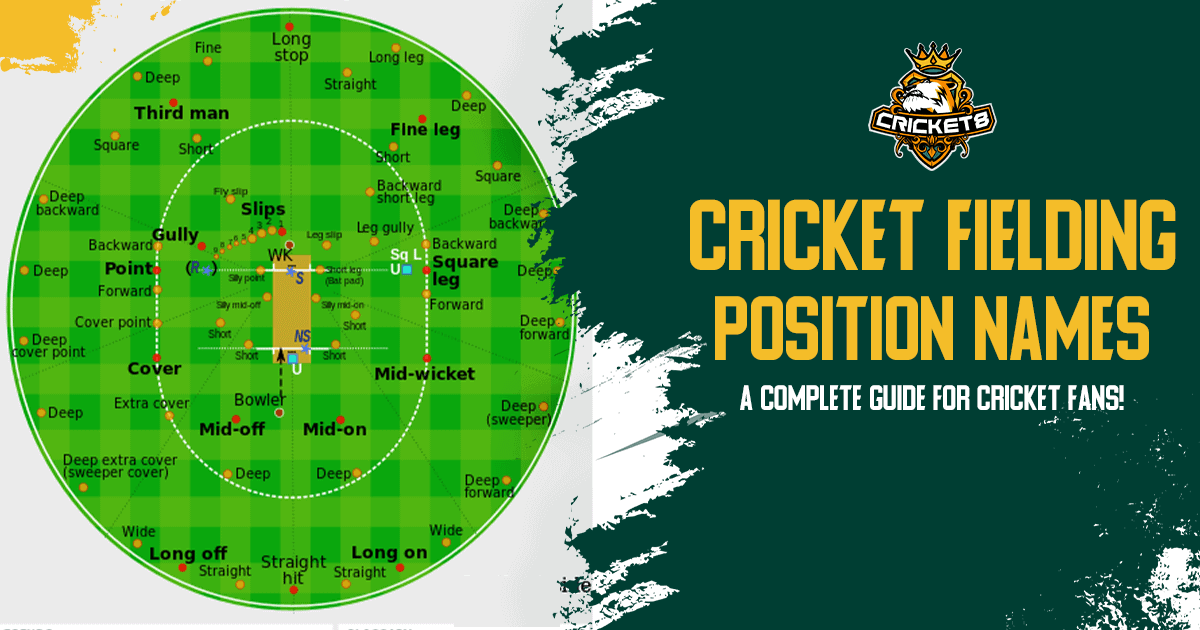Table of Contents
ToggleOverview of Cricket Fielding Positions
In cricket fielding positions are strategically placed around the field to prevent the batting team from scoring runs and to create opportunities to take wickets. Each position has a specific role, and understanding these can significantly improve a team’s defensive tactics. Cricket Field: A Comprehensive Guide
Detailed Breakdown of Each Cricket Fielding Position
Wicket Keeper
The most important cricket fielding positions is wicket keeper which is positioned directly behind the stumps at the striker’s end. This player is crucial for stumping and catching any balls that the batsman misses. The wicket keeper must have quick reflexes, sharp eyesight, and excellent catching skills.
Slips
Slips are positioned next to the wicket keeper, usually in an arc. Their primary role is to catch edges from the batsman that are directed towards the wicket keeper or slip cordon. These positions are vital, especially in Test matches where slip catches are common.
Gully
The gully fielder stands at an angle to the slips, typically in line with the point region but closer to the batsman. The gully position is crucial for catching balls that deflect off the bat at a steeper angle than those caught by the slips.
Point
The point fielder is positioned square on the off-side, typically level with the batting crease. This position is essential for stopping cut shots and preventing quick singles. A backward point fielder stands deeper, near the boundary, to stop powerful square cuts.
Cover
Cover fielders stand in the extra-cover region, between point and mid-off. Their primary role is to stop drives and prevent runs through the off-side. This position requires agility and strong throwing arms to return the ball quickly to the wicket keeper or bowler.
Mid-off
Mid-off is positioned closer to the bowler on the off-side, providing support to the bowler by stopping straight drives and preventing quick singles. This position is often taken by a senior player who can guide the bowler and fielders.
Mid-on
Mid-on is the counterpart of mid-off on the leg side. The role involves stopping straight drives and preventing runs through the leg side. This position also supports the bowler and can create catching opportunities.
Midwicket
Midwicket stands on the leg side, usually in line with the batting crease. This position is critical for stopping flicks and pulls. A deep midwicket stands closer to the boundary, aiming to stop powerful leg-side shots.
Square Leg
The square leg fielder is positioned square on the leg side, usually level with the batting crease. This position is vital for stopping leg-side shots and quick singles. A backward square leg stands deeper to stop more powerful shots.
Fine Leg
Fine leg is placed on the leg side, closer to the boundary. This position is crucial for stopping leg glances and sweeps. A long leg stands further back, near the boundary, to stop lofted leg-side shots.
Third Man
The third man is positioned on the off-side, near the boundary. This position is essential for stopping edges that pass through the slip cordon. A fine third man stands closer to the boundary to stop more delicate shots.
Long Off/Long On
Long off and long on are positioned near the boundary, directly behind the bowler on the off and leg sides, respectively. These positions are vital for stopping lofted drives and providing deep support to the fielding team.
Fielding Strategies and Formations
Fielding strategies and formations vary depending on the format of the game (Test, ODI, T20) and the match situation. Common formations include the slip cordon for fast bowlers and the ring field for spinners. Captains must adjust fielding positions dynamically to counter the batsmen’s strengths and weaknesses.
Importance of Fielding in Cricket
Fielding is a crucial aspect of cricket that can significantly impact the outcome of a game. Good fielding can save runs, create pressure on the batting side, and lead to crucial wickets. Teams with strong fielding units often perform better, especially in limited-overs formats where every run saved is vital.2018 Cricket World Cup Qualifiers: Complete Guide to Teams, Matches & Outcomes
Tips for Improving Fielding Skills
Improving fielding skills requires consistent practice and focus. Here are some practical tips:
Catch Practice:
Regularly practice catching, including high catches, slip catches, and ground fielding.
Throwing Accuracy:
Work on your throwing accuracy and speed to quickly return the ball to the stumps.
Agility Drills:
Enhance your agility with drills that improve your speed and reflexes.
Position Awareness:
the requirements of different fielding positions and practice accordingly.
Common Mistakes in Fielding and How to Avoid Them
Fielding mistakes can be costly in cricket. Common mistakes include dropping catches, misjudging the ball’s trajectory, and poor throwing. To avoid these:
Concentration:
Stay focused and anticipate the ball’s movement.
Proper Technique:
Use correct catching and throwing techniques.
Fitness:
Maintain high fitness levels to ensure quick movements and stamina.
Conclusion
Understanding and mastering cricket fielding positions can significantly enhance your performance on the field. By strategically placing fielders and focusing on their roles, teams can improve their defensive tactics and increase their chances of success. Practice regularly, stay focused, and always strive to improve your fielding skills to become a valuable asset to your team.



